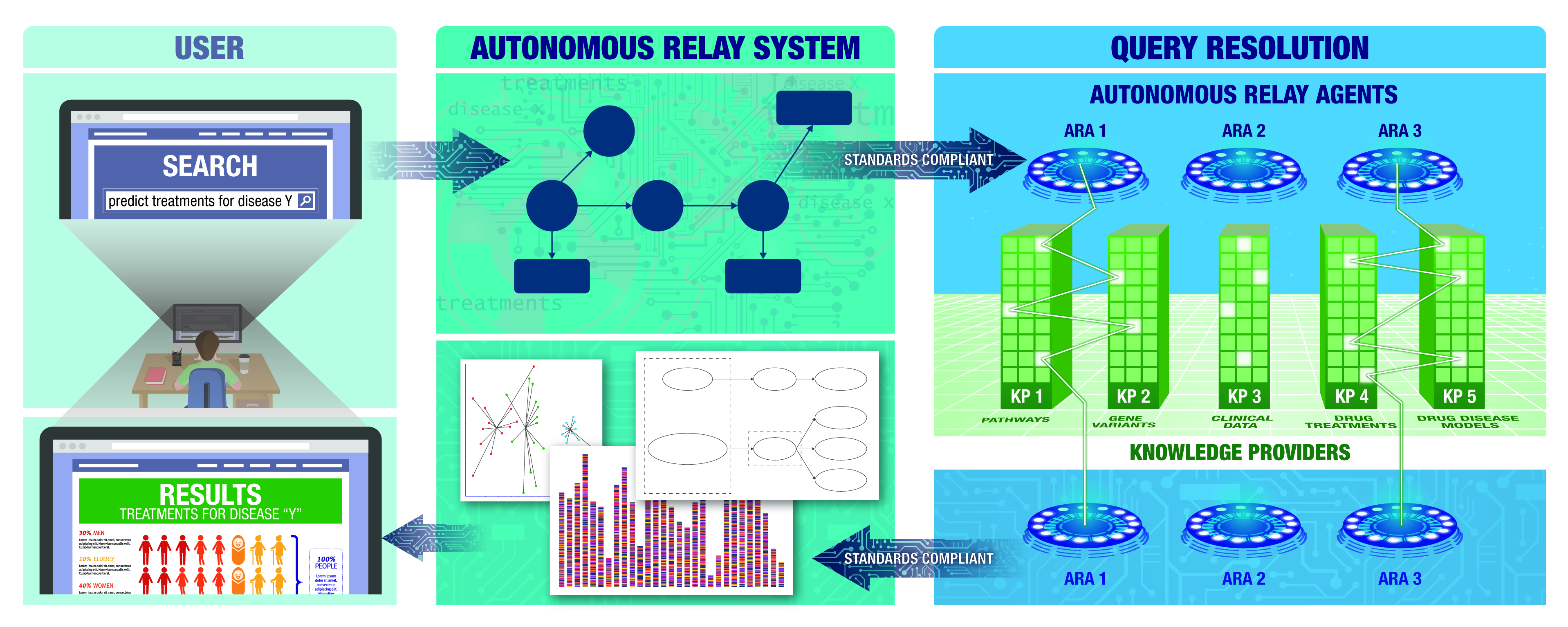With the goal of developing a Biomedical Data Translator to combine the vast amounts of currently available medical research data and speed up the development of new treatments, we gave awards to form project teams of experts from different leading universities and research institutions. In the first phase of the program, teams established feasibility, producing new biological insights and figuring out novel therapeutic opportunities using a combination of existing literature, experimental characterization and clinical data. Translator awardees are now beginning in earnest to build the tools needed to support the combination of diverse data types and show the potential impact of mining those combined data using new analytical tools that promote the discovery of complex relationships between the data for the research community.
Credit: National Center for Advancing Translational Sciences
Click the image above to download the Translator process graphic.
Translator Draft Architecture. A researcher will be able to use NCATS Biomedical Data Translator to help answer difficult biomedical questions like, “predict treatments for disease Y.” The query will be sent to Translator’s Autonomous Relay Agents (ARAs) to determine how best to answer the query. The ARA will break the query into smaller tasks that are transmitted to rich, specialty knowledge bases called Knowledge Providers (KPs). This process will be iterative, such that the ARAs and KPs can build on information from the others. Researchers will be able to explore this distilled knowledge and help them to develop new research hypotheses that lead to new scientific discoveries!
Translator Investigators
The following Translator Investigators are grouped by team name.
Open Opportunities
CATRAX Team
David Koslicki
Stephen Ramsey
DOGSLED Team
Christopher Bizon
Matthew Brush
Christopher Mungall
DOGSURF Team
Andrew Su
User Interface Team
Andrew Crouse



